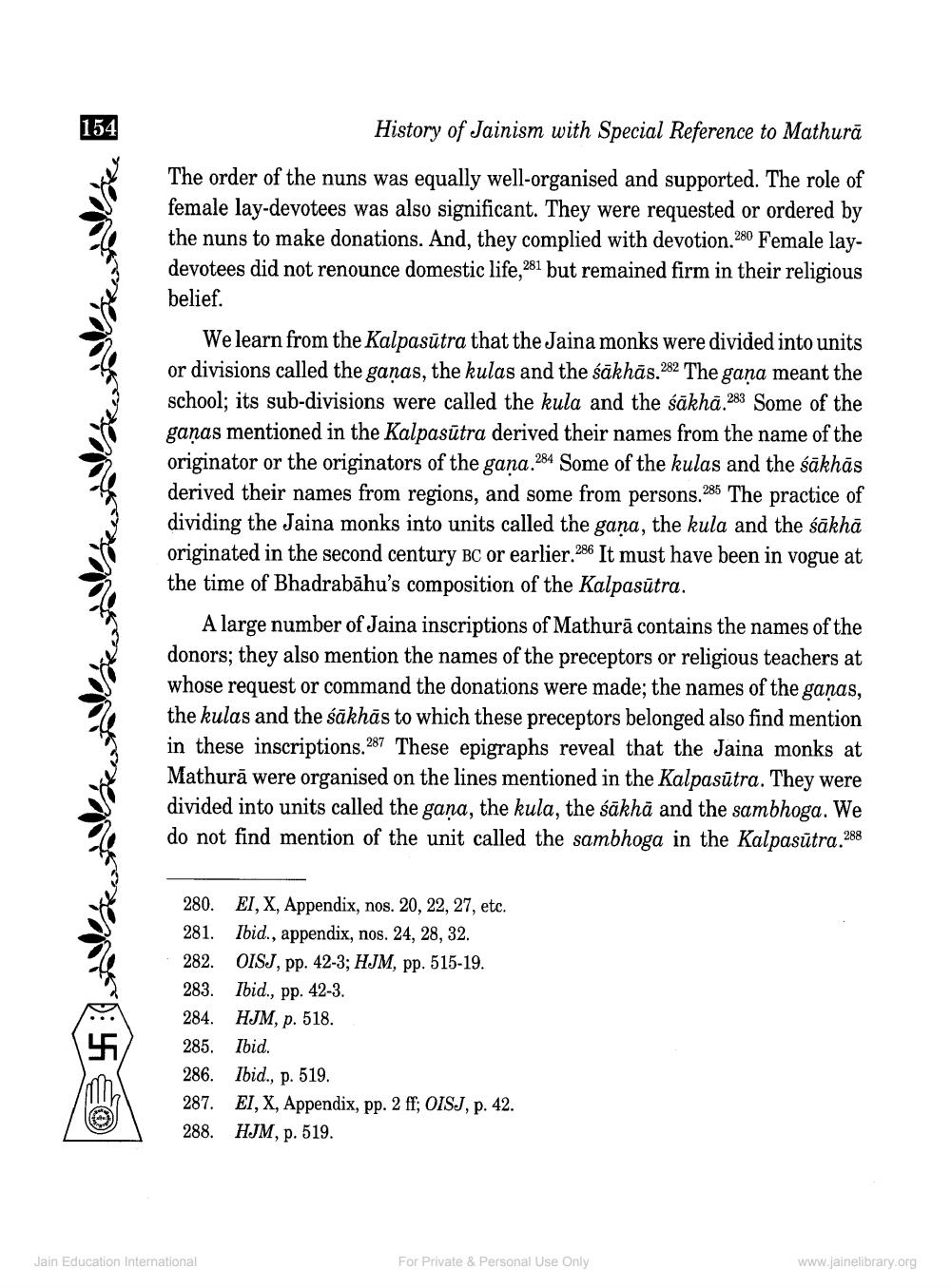________________
154
History of Jainism with Special Reference to Mathurā
The order of the nuns was equally well-organised and supported. The role of female lay-devotees was also significant. They were requested or ordered by the nuns to make donations. And, they complied with devotion.280 Female laydevotees did not renounce domestic life,281 but remained firm in their religious belief.
We learn from the Kalpasūtra that the Jaina monks were divided into units or divisions called the ganas, the kulas and the sākhās.282 The gana meant the school; its sub-divisions were called the kula and the sākhã.283 Some of the ganas mentioned in the Kalpasūtra derived their names from the name of the originator or the originators of the gana.284 Some of the kulas and the sākhās derived their names from regions, and some from persons.285 The practice of dividing the Jaina monks into units called the gana, the kula and the sākha originated in the second century BC or earlier.286 It must have been in vogue at the time of Bhadrabāhu's composition of the Kalpasūtra.
A large number of Jaina inscriptions of Mathurā contains the names of the donors; they also mention the names of the preceptors or religious teachers at whose request or command the donations were made; the names of the ganas, the kulas and the śākhās to which these preceptors belonged also find mention in these inscriptions.287 These epigraphs reveal that the Jaina monks at Mathurā were organised on the lines mentioned in the Kalpasūtra. They were divided into units called the gana, the kula, the śākha and the sambhoga. We do not find mention of the unit called the sambhoga in the Kalpasūtra.288
280. EI, X, Appendix, nos. 20, 22, 27, etc. 281. Ibid., appendix, nos. 24, 28, 32. 282. OISJ, pp. 42-3; HJM, pp. 515-19. 283. Ibid., pp. 42-3. 284. HJM, p. 518. 285. Ibid. 286. Ibid., p. 519. 287. EI, X, Appendix, pp. 2 ff; OISJ, p. 42. 288. HJM, p. 519.
Jain Education International
For Private & Personal Use Only
www.jainelibrary.org




